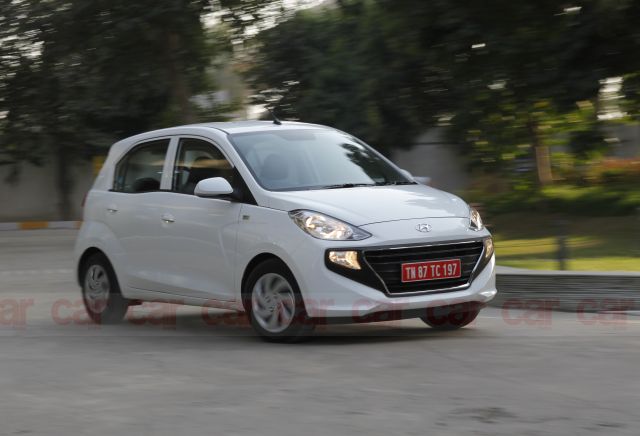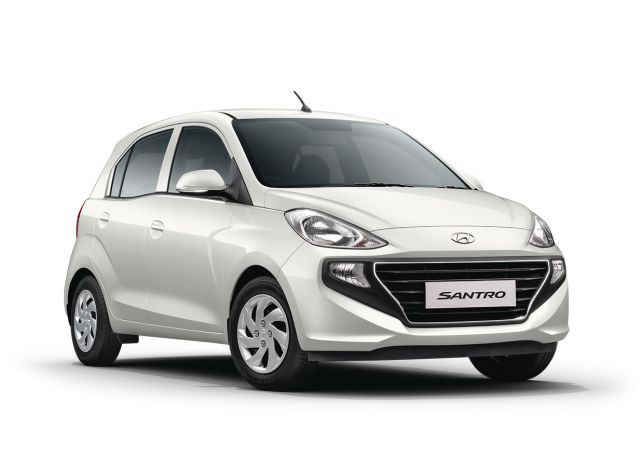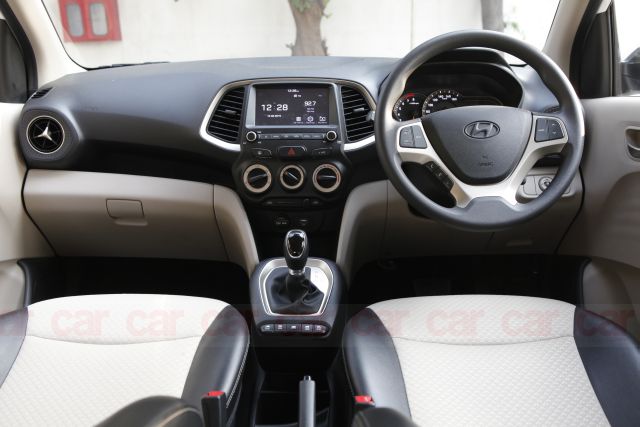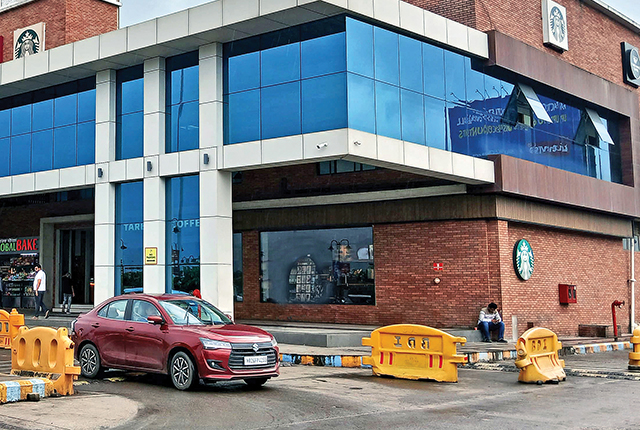
The new Hyundai Santro has made a comeback in a brand new avatar which will make new car buyers sit up and take notice.
[metaslider id=19668]
The Hyundai Santro is back! The hatchback made its global début in New Delhi on 23 October, exactly 20 years from the day the first gen Santro was introduced in India.
Hyundai Santro Price and Variants
Unlike the Eon, which was based on a built-for-price platform, the new Santro gets the K1 platform which was seen on the Hyundai i10. That’s why the new Santro is positioned above the Eon and below the Grand i10. The starting price of the Santro is at Rs 3.90 lakh for the non-air-conditioned D-Lite model and at Rs 4.25 lakh for the entry-level Era variant with a-c.
There’s the option of a factory-fitted CNG version priced at Rs 5.24 for the Magna trim and Rs 5.65 lakh for the Sportz version. We drove the Hyundai Santro AMT Sportz which carries a sticker of Rs 5.47 lakh, though the top-end manual is also available in the Asta trim, priced at Rs 5.46 lakh (all price ex-showroom, Delhi). Do bear in mind that these are introductory prices for the first 50,000 customers only. Our guess is that the prices could get a slight hike soon.
The Santro is not the most affordable car in its segment but will give strong competition to the Tata Tiago, Maruti Suzuki Celerio and WagonR, and Renault Kwid but will also take away some of Eon and Grand i10’s market share. Read on to know why…

New Santro Design
For the price, the new Santro has quite a lot to offer. The new model has taken the goodness of a tall boy design and merged it with the styling of a conventional hatchback. So it doesn’t get the usual boxy shape. The large grille with a chrome ring around, highlight the front design. The fog-lamps have been positioned higher than usual, just below the tear-shaped headlamps which, along with the cascading grille, give the car a “happy face”.
The side profile has interesting boomerang-inspired creases around the front and rear wheel arches. There’s also nice looking bits like a slight dip in the window-line, the two-tone OVRMs with integrated turn indicators and the rear spoiler on our top-end Sportz. Even our high variant test car doesn’t get alloy wheels, but it does get larger 14-inch steel rims with wheel caps (lower variants gets 13-inch wheels). The conventional rear design with a narrow trunk and small tail-lamps resembles some of the other cars in this segment. It does get a rear wiper with washer and even a defogger.
The 2018 Hyundai Santro doesn’t have a radically new design and looks more like an evolution of the i10.

Cabin and Space
Overall, it has grown in size and, compared to the first-gen model, this has helped in improving the cabin room. Not just space, the well-finished cabin is also ahead in its segment. The neat layout of the beige-and-black dashboard with champagne gold highlights gives it a premium edge. The dash also has a ridge carved out where one can keep tit-bits. You can pick the optional all-black dashboard with sporty green inserts if you like.
The propeller-shaped a-c vents have been clearly inspired by premium European cars and look cool. To charge your phone, the car has a USB port and a power outlet at the bottom of the centre console. It takes a while to get used to the unusual position of the power window switches near the gear lever, because most people are used to having them near the door arm-rest. Passengers at the back, thankfully, won’t face this issue. Hyundai have smartly designed the cabin to make it comfortable for all the occupants. So, you’ll find bottle-holders on all four door-panels and much-needed a-c vents for the rear passengers, which is another segment-first.
Being a tall boy, getting in or out of the car is convenient and it also offers a high seating position which gives the driver good all-around visibility. The shapely seats, for an Indian of average build like yours truly, are supportive and seemed fairly comfortable during our short test drive. The fixed head-rests on the front seats do manage to do their job, but the those on the rear ones seem a little low. The space for the rear-seat passengers is impressive for a car of this size; one can actually feel the difference in size between the old and new Santro. The shape of the front seat leaves enough knee-room at the back and there is absolutely no shortage of head-room. The rear a-c vents leave little room for the one on the middle seat, though, which makes the rear bench ideal for two grown-ups. The 235 litres of boot space isn’t really massive and the trunk opening doesn’t help matters either, though you can store larger luggage by toppling down the single-piece rear-seat back-rest.




















Leave a Reply